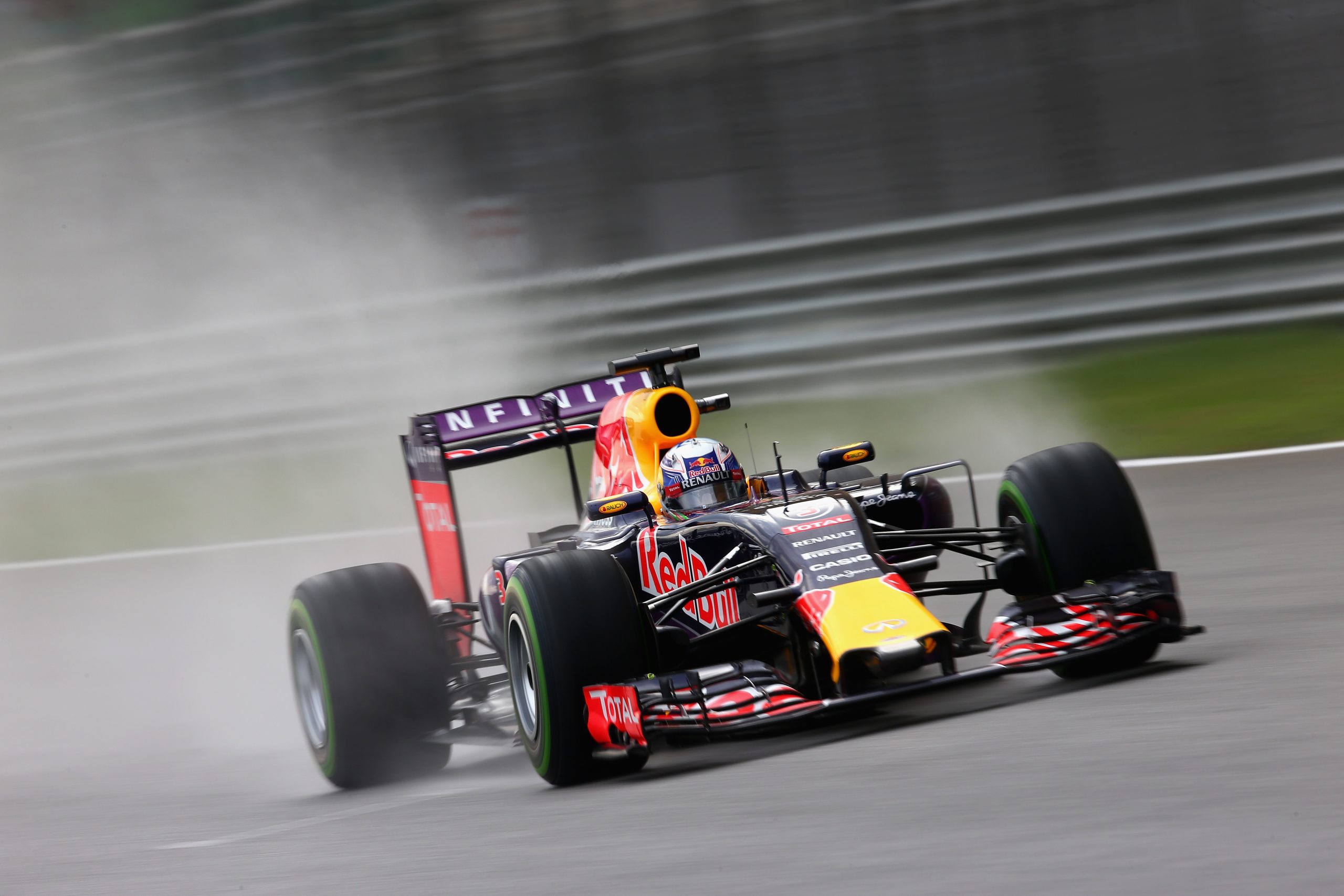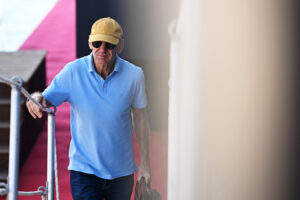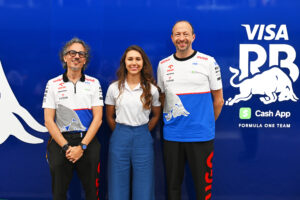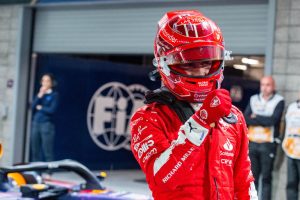Creating your own Formula 1 team is challenging. The Formula 1 heritage of Red Bull Racing is twofold. Before starting their own team, the energy drink company was around as a sponsor in Formula 1 for decades. The other part starts with three-time Formula 1 World Champion, Jackie Stewart.
As the whole Andretti vs Formula 1 saga shows, it takes effort, money, and sometimes politics. Instead, what often happens is an existing project gets taken over. The legacy of Red Bull in Formula 1 begins in 1989 when popular Austrian driver Gerhard Berger became the first athlete to get a Red Bull sponsorship. From there, Red Bull went on to sponsor Sauber through the mid-90s and early 00s. Their involvement in racing became even stronger when they launched the Red Bull Junior Team in 2001. Their first junior to reach Formula 1 was Brazilian driver Enrique Bernoldi. While his career in Formula 1 wasn’t a big success, the junior team also signed up a young kid from Germany named Sebastian Vettel.
Stewart Grand Prix
1997
The announcement of Red Bull partnering with Ford brings the story full circle. Going back to 1996 Jackie Stewart and his son Paul Stewart were able to make a 5-year deal with Ford to secure a factory-backed Formula 1 team. The team called Stewart-Ford was based in Milton Keynes and entered the championship in 1997 with drivers Rubens Barrichello and Jan Magnussen (Kevin Magnussen’s father). Their first success came at the rain-filled 1997 Monaco Grand Prix when Barrichello incredibly finished second behind Michael Schumacher. As with most teams in this era of Formula 1, the reliability of the car was a problem. The two drivers combined for a total of 23 DNFs during the 1997 season.
1998
In 1998 the car was more reliable, but outside a couple of fifth places for Barichello, it didn’t show in the results. During this period, only the top six finishers scored points, but even with the modern system, it wouldn’t improve much. Halfway through the season, Stewart became unhappy with the performances of Jan Magnussen. After the Canadian Grand Prix the Danish driver was sacked and replaced by Jos Verstappen for the rest of 1998. The father of Max Verstappen was unable to bring in the required results and was replaced by Johnny Herbert for the 1999 season.
1999
The start of the 1999 season was spectacular for all the wrong reasons. At the season opener in Australia, both cars overheated on the starting grid before the race had even begun. Thankfully for Rubens Barichello, the rules at the time allowed the use of spare cars. After starting from the pit lane, the Brazilian driver was able to finish 5th in a chaotic Grand Prix. This marked the beginning of Stewart-Ford’s best season in Formula 1. The team scored four podiums, including a one-three, with a spectacular victory for Johnny Herbert and a third place for Barichello at the European Grand Prix. Barichello was also responsible for the team’s only pole position at the French Grand Prix.
The potential of this team hadn’t gone unnoticed. At the end of the 1999 season, Ford became the sole owner and rebranded the team as Jaguar Racing.
Jaguar Racing
Jaguar’s time in Formula 1 was marked by a lot of disappointments, some minor highlights and some downright terrible mismanagement. In their five seasons in Formula 1 Jaguar never finished higher than 7th in the constructors’ championship. No wins and just two podiums in 85 entries. The team tried to start with a bang by signing 1999 Championship runner-up Eddie Irvine for 2000.
2000-2002
Jaguar’s debut season was nothing short of a disappointment, with only two points finishes in 17 races. The board appointed IndyCar legend Bobby Rahal as the new team manager for the 2001 season. While results didn’t improve much, Eddie Irvine did score Jaguar’s first podium at the 2001 Monaco Grand Prix. No consistency and a load of reliability problems caused the board to take action once more during the 2001 season. Ford added another racing legend in management, Niki Lauda. Unfortunately, Lauda’s appointment only caused more problems. Rahal and Lauda clashed, eventually resulting in Rahal leaving the team. Jaguar scored their second and final podium at the 2002 Italian Grand Prix.
Downfall and buy-out by Red Bull
2003
The higher-ups at Ford became increasingly worried about the cash spent coupled with the lack of results for the brand. Unsurprisingly, the budget was slashed from 2003 onwards. Eddie Irvine left the team along with other staff. Lauda was let go, and new management took over. While 2003 was Jaguar’s best season, results still didn’t improve much. Eventually finishing 7th in the constructors’ championship. In recent years, the only highlight that is remembered of this season was the late Justin Wilson out-qualifying Michael Schumacher during Friday Qualifying at the German Grand Prix. At the time, Formula 1 had two qualifying sessions, one session on Friday, which resulted in the order for Saturday qualifying. That aside, it is in the record books that Justin Wilson out-qualified Schumacher for one day.
2004
Jaguar’s final season in Formula 1 was largely forgettable. Aside from one of the most insane stories ever in Formula 1. At the 2004 Monaco Grand Prix, Jaguar pulled off a marketing stunt for the movie Ocean’s Twelve. Both cars were fitted with diamonds worth over $250,000 in their nosecone. What could go wrong? After a crash, one of the diamonds allegedly went missing. Many theories have gone around the paddock, but above all, it highlights the lack of on-track action worth remembering. Ford was done with Formula 1 and wanted to get rid of the team. A prime opportunity for Red Bull to come in.
Red Bull Racing
The team we know today has been around since 2005. Just like Jaguar, Red Bull made a big splash by signing Formula 1 veteran David Coulthard from McLaren. In addition to the Scots’ experience on track, he used his connections to form a team of accomplished engineers and designers. Especially, the signing of Chief Designer Adrian Newey from McLaren resulted in major improvement down the line. At the end of 2005, Red Bull also acquired Minardi and rebranded them to Toro Rosso, known as AlphaTauri today. This gave them two extra spots for Red Bull Junior drivers.
2005-2007
Red Bull Racing’s first few seasons were in the lower midfield. Fighting for points on a consistent basis. In 2005 and 2006 Red Bull finished 7th in the constructors just like its predecessors Jaguar. Coulthard scored Red Bull’s first-ever podium at the 2006 Monaco Grand Prix, but that was their only highlight. During this time Red Bull was unable to find a solid second driver next to Coulthard, swapping drivers like Christian Klien, Vitantonio Liuzzi, Robert Doornbos, and Scott Speed until they signed Mark Webber for the 2007 season. 2007 season was their best season at that point, finishing 5th in the Constructors’ Championship with Mark Webber scoring a podium at the 2007 European Grand Prix.
2008
The 2008 season was disappointing for Red Bull. They finished 7th in the Constructors behind Toro Rosso. Adding further insult to injury, Sebastian Vettel incredibly won the 2008 Italian Grand Prix with Toro Rosso. The first Red Bull victory in Formula 1, was by their junior team. David Coulthard retired at the end of 2008, which promoted Vettel to the main team alongside Mark Webber.
The Success Era: 2009-Present
Led by Adrian Newey, Red Bull Racing nailed the 2009 regulations. Suddenly, the team got catapulted into a championship fight. Vettel barely missed out on the championship against Jenson Button. Webber and Vettel had a lot of beef on track. Multi 21 being a prime example, but Vettel would end up winning four straight World Drivers Championships from 2010 til 2013. At the time, Vettel became the youngest Formula 1 World Champion, a record only broken by Max Verstappen in 2021.
Since 2009 Red Bull have been a major force in Formula 1. Consistently fighting for podiums, wins, and championships. Their best seasons have been dominant. This goes to show how long it takes to build a winning team. From Stewart-Ford all the way to Red Bull Racing, the team from Milton Keynes undoubtedly leaves an everlasting legacy on the sport.






